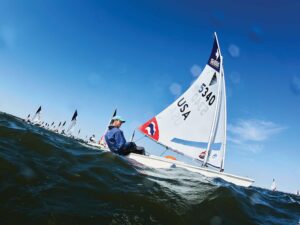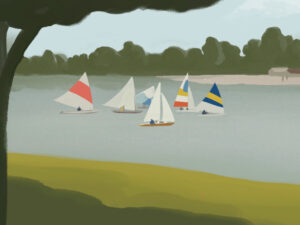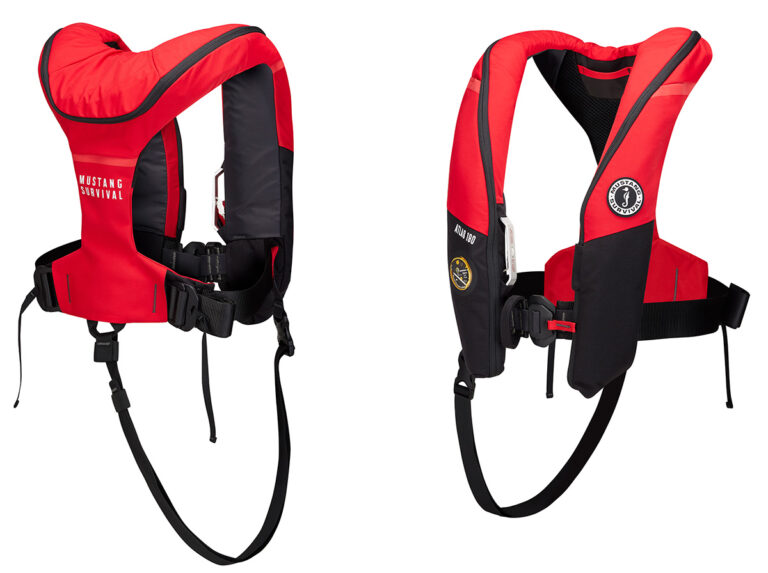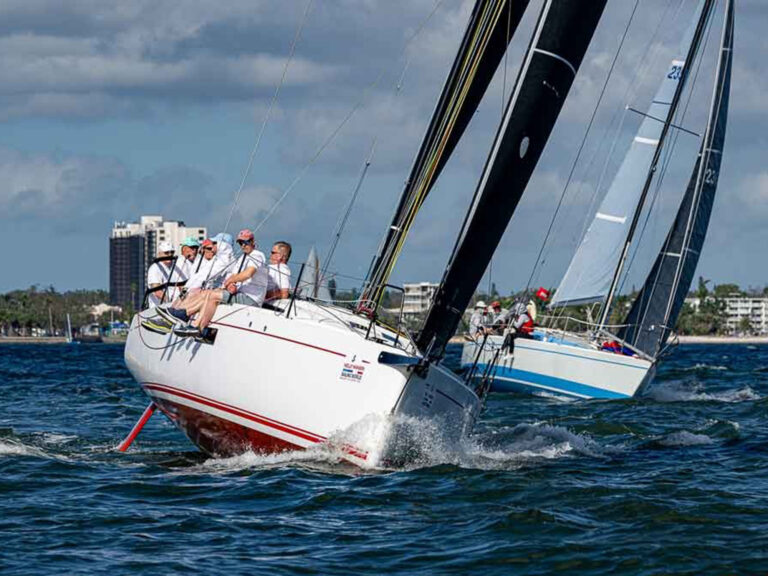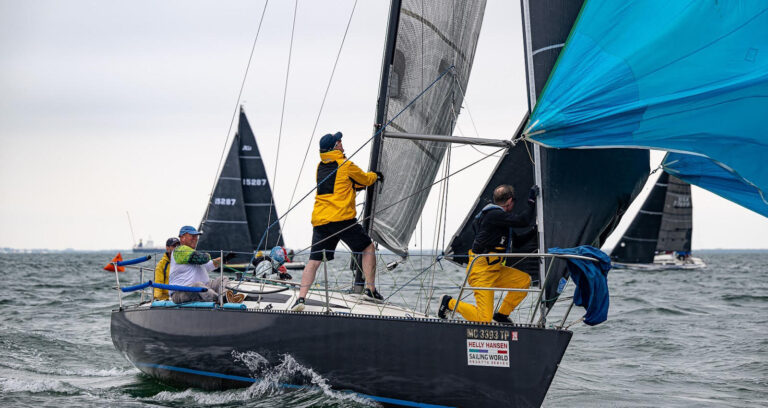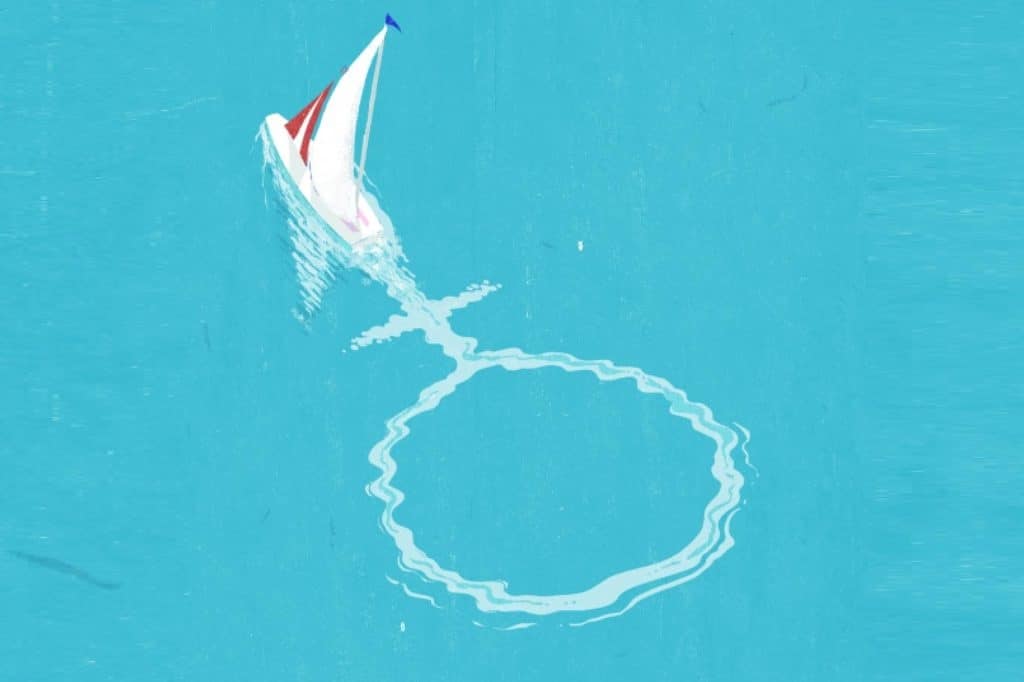
The E-Scow, at 28 feet and handled by four sailors, is a temperamental, sensitive, send-your-heart-into-your-throat kind of boat that keeps skippers of all skill levels coming back for more. I’m one of them.
In 2011, my father’s middleman was adamant about getting my hand on the tiller of our E-Scow. I was hesitant, since the only experience I had was as extra weight for Sunday-morning races, but I obliged. I sat at the stern — tiller and mainsheet in hand — hoping to keep the pointy side upright.
Every Sunday morning that year was a new lesson learned: how to feather upwind, how to get the spinnaker up successfully, communicate effectively, and what it meant to “sail it hot.”
It was a summer of learning as a new E-Scow sailor, and I quickly earned a unique reputation at the Inland Lakes Yachting Association for both my young age, just 17, and for being the only female.
My first E-Scow regatta as a skipper was on my home lake of Delavan Lake in Wisconsin. The trend continued — I was the youngest and the only female skipper registered. I was proud yet nervous about stepping into unfamiliar territory. This competitive event was typically a man’s game, and this was my debut on the racecourse.
We had our moments of glory. I rounded third at the first windward mark after blasting off the start off the line like a rocket ship. I had a pit in my stomach.
“Remember this moment,” I yelled to my father up at the bow. “This exact moment. My first regatta in third. Never forget this!”
He would have none of it. “Get this boat moving, and let’s get the chute up! Head up! Up! Up!”
It didn’t last long. Shortly after, I got caught in a lull while rounding the offset and got buried by the fleet behind me. I lost my composure, fell out of phase and, as a result, got a stern talking to. I ended up dead last overall. All in all, I was proud that I finished. I took every ounce of constructive criticism from fellow competitors. My jitters were gone.
The next two seasons flew by. I had figured out how to finesse the E-Scow downwind, but not without learning the importance of unloading the vang while rounding the offset mark. I’ve never heard truer words than when my father said, “You’re not a true E-Scow sailor until you’ve rolled your boat.”
The following four years was a pivotal time for our local E-Scow fleet. In 2013, another E joined our starting line: two sister skippers with a crew all under 18 years old. Even though I had coached them during their Opti and Cub boat days, they proved to be fierce competition for me in the E-Scow. They were aware of our trick tactics on our home lake and didn’t hesitate to use them against us.
Then in 2015, another joined us, after mastering a singlehanded MC, a friend and longtime scow sailor tried her hand at the tiller of an E-Scow. On one blustery 25-knot-breeze day, she roared downwind in a veil of spray before exploding a mast. Pieces of that spar now hang in her apartment, serving as a daily reminder that downwind legs are much more dramatic with a spinnaker. Next season, she bought her very own E-Scow and is the most recent addition to our fleet.
Our fleet grew to 10 boats, and we ladies of the lake were a spectacle on the course. Our home yacht club now had three dedicated female E-Scow skippers on the starting line, all under the age of 25. The Delavan Lake YC hadn’t experienced anything quite like us before, but we were proud to change the expectations many others had about female skippers.
We had stepped out of our comfort zone and took on the largest boat our home lake had to offer. The addition of three competitive female skippers redefined and reshaped a once-stagnant fleet. Many times along the way we’ve been mistaken for crew or extra weight, but it doesn’t bother us.
It’s a proud feeling to be asked, “Who do you crew for?” and be able to reply: “I’m not crewing. I’m the skipper.”
We are proving that a big boat, like the E-Scow, doesn’t require a big skipper. It requires only a big voice and a well-trained crew.

